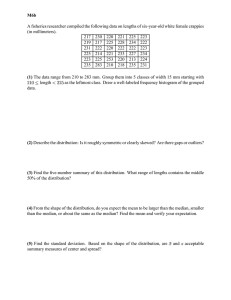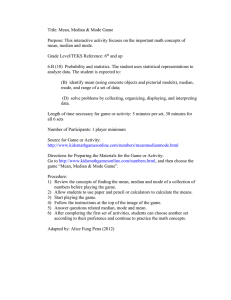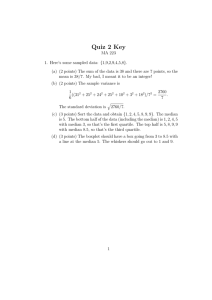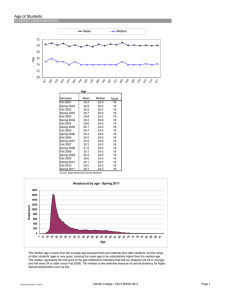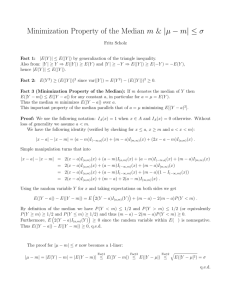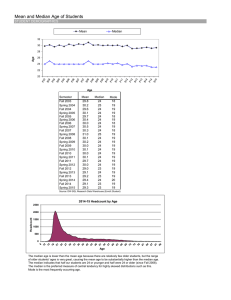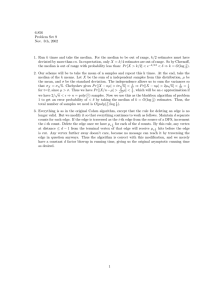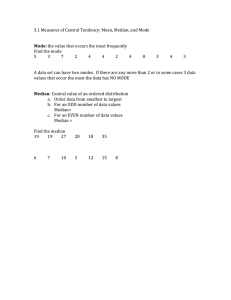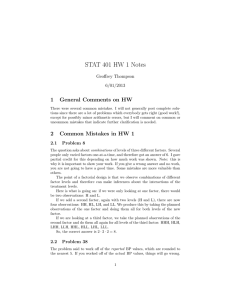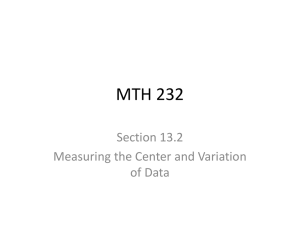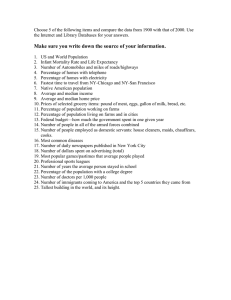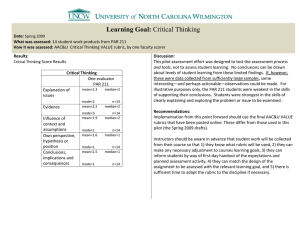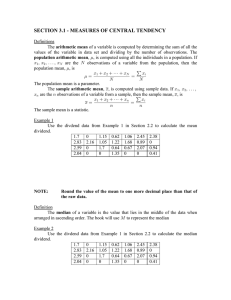Nov2Costs
advertisement
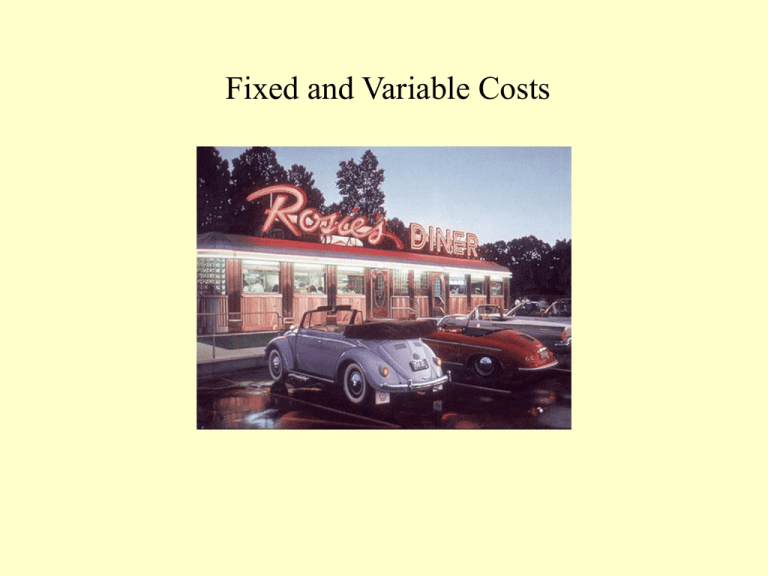
Fixed and Variable Costs Median income per household member in the U.S. in 2006 was in the range from: 1) 2) 3) 4) 5) 6) 7) 8) $15,000-20,000 $20,000-25,000 $25,000-30,000 $30,000-35,000 $35,000-40,000 $40,000-45,000 $45,000-$50,000 Above $50,000 What was it? • Median income per household member was about $26,000. • How does that square with per capita income of $42,000. • Why is median different from mean? • Consider incomes 1, 2, 3, 4, 100 • What is median? 3 • What is mean? (1+2+3+4+100)/5=22 Are you satisfied with the restaurant offerings in Isla Vista? A) B) C) D) They are fine. Not too bad. Not very good. Terrible A firm’s total costs are $100+4Q where Q is the number of units produced. If this firm produces 10 units, its average total cost is A) B) C) D) E) $4 $10 $14 $40 $50 Why is that? • Total costs are $100+4Q. • Total cost of producing 10 units is $140=$100+4x10. • Average cost is total cost divided by number of units. • That’s $140/10=$14 A firm’s total costs are $100+4Q where Q is the number of units produced. If this firm produces 10 units, its average variable cost is A) B) C) D) E) $4 $10 $14 $40 $50 Why is that? • • • • Total costs are $100+4Q. Fixed costs are $100. Variable costs are $4Q. Average variable costs are $4Q/Q=4 A firm has already incurred fixed costs of $120. It has variable costs of $10 per unit and a capacity of 12 units. It faces a competitive market with price p. It should sell A) 12 units if p>$10 and no units if p<10. B) 12 units if p>$20 and no units if p<$20. C) 12 units if p>$10 and 6 units if p<$10. Why is that? • Fixed costs are sunk. Nothing can be done about them. Firm does best it can. • This means sell up to capacity if price is bigger than marginal cost of $10. And on to our lecture…




